»New Ways to Present Decorative Arts and Design«
4–9 June 2008
Museum of Arts and Crafts, Zagreb, Croatia
Report
Vom 4. bis 9. Juni 2008 fand im MUO, dem Museum für angewandte Kunst in Zagreb, Kroatien, die jährliche Konferenz der ICDAD – International Commitee of Decorative Arts and Design – statt.
Das ICDAD-Board hatte den Tagungsort bewusst gewählt, galt es doch, die Bemühungen der Fachkollegen und die Fortschritte der Entwicklung im Museums- und Ausstellungssektor im Bereich der angewandten Kunst und des Design in einem Land zu studieren und zu unterstützen, das zehn Jahre nach dem Ende des Jugoslawienkrieges heute an der Schwelle zum EU-Beitritt steht.
Unter dem Titel "New Ways to Present Decorative Arts and Design" fand die Konferenz statt, die anhand der Lectures internationale Positionen zum Problem der Objektpräsentation im Museum bot. Wie immer bei ICDAD-Konferenzen kam der Besichtigung der einschlägigen Museen in und um Zagreb besondere Bedeutung zu, entspinnen sich doch erfahrungsgemäß die lebhaftesten Diskussionen vor den Objekten. Besonders hervorzuheben ist hier der Besuch des privaten Marton Museums in Samobor, einer exquisiten Sammlung von Wiener Porzellan, die dieses Jahr in Wien im Liechtensteinmuseum präsentiert werden soll.
Dank der umsichtigen Vorbereitung durch die Kollegen des MUO Zagreb, allen voran die Kuratorin Nela Tarbuk und ihr Direktor Miroslav Gasparovic, sowie durch die großzügige Unterstützung des kroatischen Kulturministeriums konnte die Konferenz einen umfassenden Überblick über die Entwicklung und den aktuellen Stand der angewandten Kunst und des Design in Kroatien bieten. Das Programm führte nicht nur zu den wichtigsten, auch mit Österreich stark verbundenen kulturellen Zentren im Norden Kroatiens wie Varaždin oder Trakošćan, sondern bot in einer zweitägigen Exkursion auch die Möglichkeit, das kroatische Küstenland von Zadar bis Split unter dem Aspekt der angewandten Kunst kennenzulernen, wobei besonders die Begegnung mit Fachkollegen und die Möglichkeit, Museen und Sammlungen auch jenseits der permanenten Präsentation kennenzulernen anregend wirkten.
Ein Ergebnis der Konferenz, die unter Beteiligung einer starken österreichischen Delegation stattfand, war die Anbahnung von direkten Kontakten zwischen österreichischen und kroatischen Museen und die Aufnahme konkreter Gespräche über Ausstellungskooperationen. Beeindruckend waren der hohe ästhetische und kuratorische Standard, den die in den letzten zehn Jahren realisierten Präsentationen in kroatischen Museen aufweisen. Im Bereich des Design setzt Kroatien vor allem im Bereich Grafik Design hohe Maßstäbe, die das Land international konkurrenzfähig machen, wie der Besuch von Grafikateliers und einschlägige Gespräche mit den Kuratoren des MUO erweisen konnten.
ICDAD sieht seine Aufgabe in der Unterstützung dieser sehr erfolgreichen Initiativen in Kroatiens Museen und im Bereich des Design und versteht die Konferenz 2008 auch als Hinweis auf diese Entwicklung in Kroatien, die das Land in kultureller Hinsicht schon europareif erscheinen lassen.
Dr. Rainald Franz, Präsident ICDAD
Programme
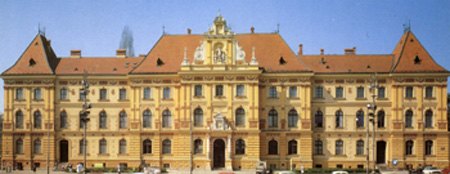
Wednesday, 4 June 2008
| 11.00 - 12.00 | Registration at the Museum of Arts and Crafts |
| 12.00 - 13.00 | Welcome and opening of the conference by the director of MUO. |
| Greetings by the President of ICDAD. | |
| Greetings by the President of the National ICOM of Croatia. | |
| Opening by the Minister of Culture of the Republic of Croatia. | |
| Lecture: Nela Tarbuk, MUO: Decorative Arts in Croatia - Past and Present | |
| 13.00 - 14.00 | Lunch |
| 14.00 - 15.00 | Short tour through the permanent display of the MUO |
| 15.00 - 17.00 | First panel: Nela Tarbuk, chairman |
| 1. Rainald Franz, MAK, Vienna: ICDAD - Perspectives for the Future | |
| Rainald Franz introduces: | |
| 2. Petra Krutisch, Germanisches Nationalmuseum, Nuremberg: With light and magnifying glass - an uncommon aspect of the Roentgen furniture in the collection of the Germanisches Nationalmuseum | |
| 3. Wolfgang Schepers, Museum August Kestner, Hannover: Some remarks on presenting Product design | |
| 17.20 - 18.20 | City Museum - MGZ permanent installation with objects of decorative arts from the past centuries up to the contemporary design. On the way to the MGZ in the upper town, introduction to the important history and urbanistic plan of the oldest part of Zagreb |
| 18.30 - 19.00 | Private Collection "Gvozdanović", shows a home which illustrates the way of living of the upper social classes in Zagreb from late nineteenth to the beginning of the twentieth century / with Coffee Break |
| 19.00 - 20.30 | Samobor, picturesque small town close to Zagreb, Museum "Marton", first private Museum in Croatia collections of ceramics, porcelain, glass, furniture |
| 20.30 | Welcome dinner |
| Return about 23.30 |
Thursday, 5 June 2008
| Museum of Arts and Crafts | |
| 09.00 - 11.00 | Second panel |
| Elsebeth Welander-Berggren introduces: | |
| 1. Mart van der Sterre, Stichting Kerkelijk Kunstbezit in Nederland: The Foundation - New ways to present Decorative Arts and Design. Internet as one of the best option to attract people to the data which are gathered by the SKKN. The SKKN uses internet in various ways for various purposes. | |
| 2. Anna Ridovics, Hungarian National Museum, Budapest: The threedimensional (3D) projection in the presentation of the decorativ arts in connection of the exhibition "The Art of the Neapolitan Nativities | |
| 3. Velta Raudepa, Museum of Decorative Arts and Design, Riga: MORITZ in the Museum. A lecture about the Museum's practice in the EU project MORITZ |
|
| 11.00 - 11.30 | Coffee Break |
| 11.30 - 13.30 | Second panel be continued |
| Ellenor Alcorn introduces: | |
| 4. Martina Pall: Hanns Schell Collection in Graz | |
| 5. Martina Strakova: Art collectors and patrons as a key to understand the work of art | |
| 6. Koraljka Vlajo, MUO, Zagreb: Contemporary design in Croatia | |
| 13.40 - 15.40 | Design atelier visit of designer’s ateliers, presentations and discussion Lunch Break in atelier |
| Museum of Arts and Crafts | |
| 15.50 - 16.50 | Marketplace |
| 1. Michael Bohr: Austrian baroque furniture in monasteries | |
| Wendy Kaplan, LACMA: California design 1930 - 65: "Living in a modern way" | |
| Widar Halén, National Museum of Art, Architecture & Design, Oslo: Grete Pryt Kittelsen - a Norwegian pioneer in enamel and design | |
| Silvia Barisione, Wolfsoniana, Genoa: Antonia Campi. Ceramic and Industrial Design | |
| 16.50 - 17.00 | Coffee break |
| 17.00 - 18.00 | General Conference Reports by President, Board, Treasurer |
| 18.15 - 19.00 | National Old Library, today National Archive |
| 19.15 - 20.15 | Art Collection Ante and Wiltrude Topić Mimara, Museum "Mimara". The collection includes objects of Fine Art and Decorative Art from the European region, as well as objects from the Middle and Far East |
| 20.30 | Dinner |
Friday, 6 June 2008
| 08.00 - 19.00 | Full day excursion |
| 08.45 - 11.00 | Gornja Stubica, in the past castle was owned by the counts Oršić, today it houses a museum two permanent displays - the first showing the history and life of noblemen in the area of Hrvatsko zagorje- the second display focuses on ecclesiastical art from the same area, and both installations comprise exhibits from the field of decorative arts. Coffee Break |
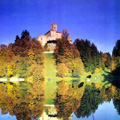
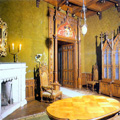
| 12.00 - 15.00 | Trakošćan, in the former days the castle was owned by the most famous Croatian noble family, the counts Drašković The old castle, situated on a hill, surrounded by a lake was rebuilt in Neogothic style in the mid-19th century. The new permanent installation tries to revive the Neogothic castle interiors, including pre 19th-century pieces of furniture and other objects. Lunch Break |
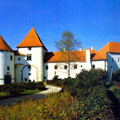
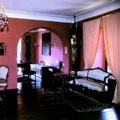
| 15.30 - 19.00 | Varaždin, baroque town, it used to be the 18th century capital of the Croatia A lot of famous churches were built by the Pauline, Jesuit, Ursulin and Franciscan orders in the time of counterreformation. The old town castle is the museum of the town of Varaždin today. It is a good example for a museum in an old fortification. An excellent permanent installation with plenty of exhibits from the fields of applied art, furniture, silver, ceramics, textiles is on show here with some extraordinary pieces like an 17th century ivory cabinet. |
| 20.00 | Zagreb Farewell dinner palace Dverce representative palace from baroness Buratti with interiors from the second half of the 19th century. Today the government palace serves for representative purposes. |
POST CONFERENCE TOUR
Excursion will take place along the Adriatic Sea, to the southern part of Croatia
Saturday, 7 June 2008
| 07.00 - 10.00 | Zagreb - Zadar |
| 10.00 - 15.00 | Zadar is a 3000 year old town and once was the capital of Dalmatia, southern part of Croatia The layout of the city still follows the Roman streets today. National museum with exhibits including the decorative arts |
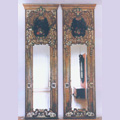
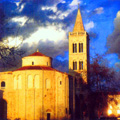
| Coffee break Permanent exhibition with outstanding pieces of silver and golden ecclesiastical applied art objects Forum Romanum - church of St. Donatus from the 9th century, Romanic and Gothic churches, cathedral, medieval and renaissance remnants, the recently opened Museum of Roman glass Lunch Break |
|
| 15.00 - 16.00 | Zadar - Šibenik |
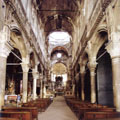
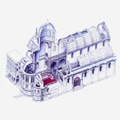
| 16.00 - 17.00 | Šibenik Gothic-Renaissance town with the fortifications and cathedral of St. James, protected by UNESCO Coffee break |
| 17.00 - 18.00 | Šibenik - Split |
| 18.00 | Split The town Split grew out of the palace of the Roman Emperor Diocletian. In the Middle Ages, it became the nucleus of the future town. Many remnants of Roman architecture still remain within the city Museum of the town of Split The Museum is situated within the Papalić palace, late Gothic building |
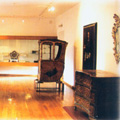
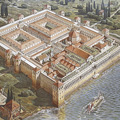
| Coffee Break The Museums collections contains objects of the cultural and historical importance for the town as well as objects of fine art and decorative art. |
|
| 20.30 | Dinner |
Sunday, 8 June 2008
| 08.00 - 10.00 | Split - Narona |
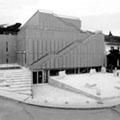
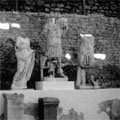
| 10.00 - 12.00 | Narona Narona is the first archeological museum built "in situ", on the remains of Roman heritage. It is interesting because of the great value of the objects, marvelous roman sculptures, as well as the contemporary museological approach taken for the conception of the permanent installation. The museum was opened last summer. (including Coffee break) |
| 12.00 - 14.00 | Narona - Split |
| 14.00 - 15.00 | Lunch |
| 15.00 - 19.00 | Archeological museum Coffee Break Peristil, cathedral St. Dujam, treasury - outstanding heritage of the high importance |
| 19.30 | Farewell Dinner at the "Ivan Meštrović" Foundation |
Monday, 9 June 2008
| 07.30 - 08.00 | Split - Trogir |
| 08.00 - 11.00 | Trogir Famous cathedral with well-known portal signed by master Radovan, from the 13th century. Ćipiko Palace from 13th to 15th century. The Ćipiko family was one of the outstanding Trogir noble families. Town museum in the palace of the Venetian family Garagnin. |
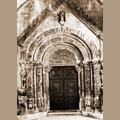
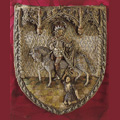
| 11.00 - 11.30 | Coffee break |
| 11.30 - 15.30 | via Zagreb airport |
Abstracts
Antonia Campi. Ceramic and Industrial Design
Silvia Barisione, Wolfsoniana, Genoa
The Wolfsoniana exhibit (April 5 - September 7, 2008) shows a selection of ceramic pieces designed by the important Lombard ceramist Antonia Campi and produced by the Società Ceramica Italiana (SCI) in Laveno beginning in 1949. She studied at the Brera Fine Art Academy in Milan and initially dedicated herself to sculpture. In 1947 she turned to ceramics and joined SCI in 1947. In 1962 she succeded Guido Andlovitz as artistic director of production. The exhibition explores Campi's experimentation with serial production and the goal of the display is to show the use of various colours and chromatic pairings in order to point out the formal structure of the designs through repetition.
Austrian baroque furniture in monasteries
Michael Bohr
Austria has an abundance of sacred buildings which were furnished in the 17th and 18th centuries. In research scheduled for three years I undertake a study of the furniture in the monasteries of the Benedictine and Cistercian orders to get a limited number of abbeys distributed over all of Austria. The aim is to draw up a catalogue of Austrian furniture with pieces of comparison that would facilitate the task of both dating furniture more accurately and relating it to certain geographical regions. Actually an investigation of the Austrian baroque furniture by means of documents containing information about their provenance and age has not been carried out. Such pieces are particularly likely to be found in sacred buildings. Therefore it seems reasonable to proceed from church-related furniture so as to arrive at a sufficient number of incontestable examples.
Future Perspectives of ICDAD
DR. Rainald Franz, MAK, Vienna, President of ICDAD
Dear Colleagues and Friends,
let me welcome you again here at the MUO, the Croatian Museum of Decorative Arts in Zagreb. It is a pleasure to be here and to have this historic place, which has been restored to modern standards so well to discuss this year’s conference topic New Ways to Present Decorative Arts and Design.
Before we get into this field; I wanted to give you a quick insight of the working agenda, the new ICDAD Board has tried to meet with since its constitution.
On the other hand, I would like to draw your attention to goals for the future of ICDAD which we, the members of the ICDAD Board, think are crucial for the future of our commission.
I am pleased to update you about the goals of the new Board, which gathered for the first time last December at the Germanisches National Museum in Nuremberg.
Our first issue we started out on was the ICDAD homepage:
A new layout of the ICDAD homepage has been established during the last months. Now the members of the Board will be able to manage the new homepage more directly. If you are a frequent user of our homepage, you might have realized the changes.
It is our policy to develop the ICDAD homepage ICOM-ICDAD.com as the sole medium of communication for our commission. However, in this effort, as in all our initiatives, we depend on our members response and support. Our homepage can only become a working instrument if you respond and involve yourself.
It is our vision to make the homepage the intersection of vivid discussions and presentations in our field, which experts in the field of Decorative Arts and Design are supposed to visit when staring research for articles, exhibitions etc.
ICDAD-members, who are interested in placing announcements about upcoming exhibitions, publications, symposia, etc. should contact the homepage address, i. e. the address of our secretary Silvia Barisione and we will do our best to bring on these informations as soon as possible. This of course means that the Board also has to do the editing of the ICDAD homepage.
One first outcome of these efforts is the fact, that for the first time, you will find all the titles and abstracts of our lectures and marketplace presentations on the homepage before the conference has started. In order to make the information more dense and to keep records from our conferences apart from printed material, we have taken this step. The material on our Zagreb conference will not be lost after the end of the conference:
At the same time as we started the new homepage, we installed there a kind of ICDAD archive about former conferences, lectures and boards. So, you are very welcome to send us material on this issue, former conference programs, photos etc., which will add to a living memory of our organisation, not in peril of being lost with the change of the Board, but which hopefully will be carried on by future ICDAD-Boards to come.
By the way, doing this, ICDAD closely follows the regulations given by ICOM to its international committees during the General Conference in Vienna last August. It is our strategy to save scientific contents, we have established as a committee in this modern way and to supply members not able to attend the annual conference with these informations.
A second crucial issue we drew our attention on was the question of our members database.
When we started out, we took over a database of members, updated by ICOM during last years General Conference in Vienna.
However, it proved very soon that the data given on this file from Paris did not match with the informations given by many of our members to Paris when registering for ICDAD.
Our secretary Silvia Barisione has taken the effort to go over this list and to make it a working email list supposed to become the basis for future email-letters and newsletters by ICDAD.
Still, changes are to be made and we have brought the list to Zagreb once more and would ask you to check your data and data by colleagues of your national committee you know, in order to make our mailing list a working one, which comprises up to date informations about you, our members.
These informations are crucial either, because we want to continue the process towards e-mail voting and e-ballots for the election of the ICDAD Board, started with last years elections.
So once more, let me ask you as our members to check if your email address is correct.
Another point we, as New ICDAD Board want to discuss, is the question of the duration of our annual conferences
In the future, it is our goal to work towards shorter, more intense meetings, supposed to match the expectations of you, the members of ICDAD.
We are facing the problem that the institutions we are working in are less and less willing to sponsor their curators trips for ICDAD meetings. The only way to work against this tendency is to split up conferences between working meeting and post conference tour.
This years program here in Zagreb is already an outcome of negotiations and the effort to match with this idea: A three days working meeting, leaving time for discussion and excursions to places hardly accessible on private and a post conference tour, which will give us a condensed insight of the landmarks of the Croatian coastal region in our field.
A last point I want to stress here is the question of financing the ICDAD’s activities
As you know, ICDAD finances its meetings, homepage and activities as support for scholarships for young colleagues by way of subventions gained by sponsors and mainly by the money we receive from Paris, a share of the membership fees we all pay.
I want to raise the question, if ICDAD should take the effort to apply for EU-funding for activities in the field of exhibitions and publications. If we do so, we must face the fact that this means we have to nominate ICDAD members in charge of this project and it means that we will have to cooperate with the Financial departments of institutions and museums we work in, because the financing from EU Grants only covers 50% of the costs inflicted and means that the museums cooperating have to self-finance the initiatives first, before receiving the money from Brussels. Chances are that we could put together such a budget and we at the MAK in Vienna have gone through various such projects in the meantime, being the only chance to gain money for projects, which are not in the focus of our director. However, from the burocratic side, these projects tend to become very tedious.
I am sorry for taking this non-philosophic and not so high brow approach towards our perspectives to star out from, but I think we have to face the actual problems in the first place and solve them before being able to work for contents in scientific ways.
All in all, it is on us as members of ICDAD to avoid a feeling of agony when thinking about our committee. We should set out and work on issues like a redefinition of our mission statement. An international committee like ICDAD will only stay alive and working, if changes are made and this is what we are here for in this conference in Croatia.
Zagreb, 4 June 2008
California design 1930 - 65: "Living in a modern way"
Wendy Kaplan, LACMA
This exhibition scheduled to open at the Los Angeles County Museum of Art in September 2011 will examine the role of California designers in shaping material culture of the United States in the period just before and after WWII. As it became the center for the shipping and aircraft industries essential for the war effort the state experienced intense growth and radical change. The migration of people to California in search of economic opportunities, the creativity spurred by restrictions on materials and manpower, followed by the imperative to apply the newly developed materials and production methods to peace time use, all contributed to an unprecedented efflorescence of experimentation and optimism. The exhibition will examine the specific influences of designers, architects, graphic artists and craftsmen on Californian design and the way the new environment shaped them and transformed their work.
Hanns Schell Collection in Graz
Martina Pall
The large private museum has more than 2.500 sqm showroom and more than 13.000 objects. Last autumn we opened our third floor with decorative objects from Asia and Africa so we have more space for showing Decorative Arts from Europe in the first and the second floor. We are the world largest museum for iron and locks and keys, boxes, chests and cast iron objects. We are publishing catalogues about our objects (the last was about treasure boxes and the next will be about padlocks in Europe). Mr. Schell is expanding his collection nearly every week with new objects and we are planning to build a new museum in the next years. The collection is so unique that people from all over the world are coming to Graz to see the museum.
The threedimensional (3D) projection in the presentation of the decorativ arts in connection of the exhibition "The Art of the Neapolitan Nativities"
Anna Ridovics, Hungarian National Museum, Budapest
The Hungarian National Museum exhibition (Nov. 2007 - Jan. 2008) presented through material relics a taste of the formation of the Christmas cycle and the tradition of mounting nativities. In 2001 the Museum purchased the nine Neapolitan Nativity figures, shaped with exquisite handcraftsmanship, which formed the nucleus of the exhibition. Using special glasses and unique technique of stereo projection originally developed for medical science by Istvan Stuber and his team, visitors were able to feast their eyes upon the fine, special details of the nativity figures.
Art collectors and patrons as a key to understand the work of art
Martina Strakova
Since last year Moravian Gallery in Brno has been organizing a project focused on art collectors and patrons of the Moravian Gallery in Brno, or more precisely its ancestral institutions the Moravian Museum of Applied Arts and the Picture Gallery of Moravian Museum. A part of this project is dedicated to those collections of art, which were built by artists. It is represented by the collection of applied arts belonged to Hans Makart. This famous Austrian painter collected above all renaissance and baroque objects, originals or copies. The Moravian Museum of Applied Art bought luxurious pieces of furniture, carpets, candelabrum etc. after Makarts death. These objects have never been examined in connection with Hans Makart.
